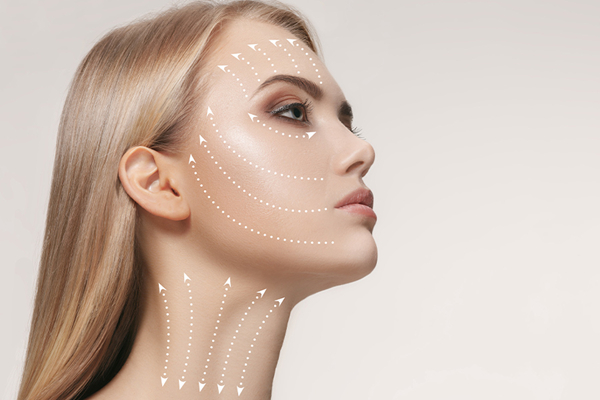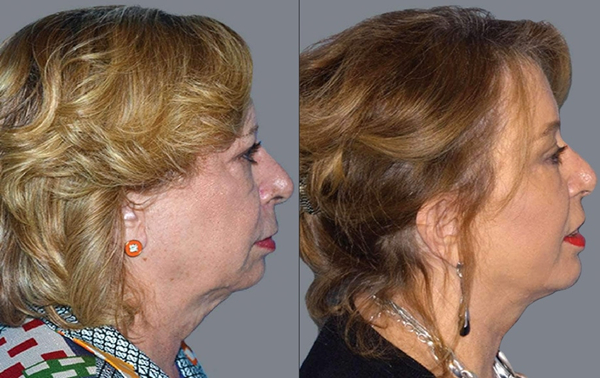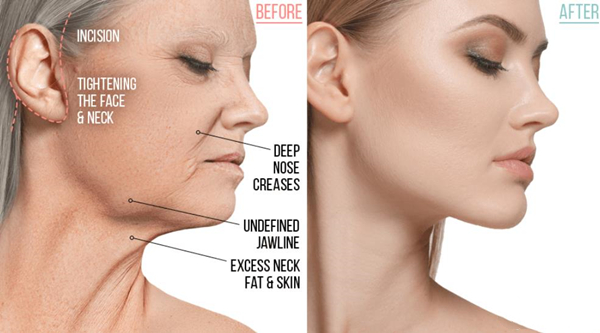FaceLift Surgery in South Korea, Here are Facelift Surgery Recovery,Overview,Features...
FaceLift Surgery is a procedure designed to address the effects of aging on the skin. As we age, the moisture in our skin decreases and the elastic and collagen fibers start to deteriorate, leading to a loss of elasticity. Additionally, gravity causes the skin to sag and wrinkles to form. This is particularly noticeable in the area around the cheekbones and cheeks, where the skin becomes visibly sagging.

As a result, the front cheekbones and cheeks appear sunken, nasolabial lines and wrinkles around the corner of the lips become more prominent, and the jawline loses its smooth appearance. These changes typically become more apparent between one's 30s and 40s.
Facelift Surgery Recovery in South Korea
The recovery process and timeline after facelift surgery depend on the specific type of surgery performed. The aftermath of a facelift procedure often includes swelling, bleeding, and potential anesthesia-related complications. However, these are all normal aspects of the recovery stage and can be effectively managed by following the surgeon's instructions.
The duration of the facelift surgery recovery can differ depending on the chosen procedure and the extent of the surgery. For example, the SMAS lift generally requires more downtime compared to the short scar surgery.
Facelift Surgery Overview
Facelift surgery is a comprehensive procedure that can be combined with other plastic surgery treatments and minimally invasive procedures to achieve optimal facial rejuvenation. While a facelift can improve the appearance of the jawline, cheeks, nose area, and corners of the mouth, it does not address issues with the neck, brow, forehead, or eyelids.
In some cases, eyelid surgery may be performed concurrently with or following facelift surgery to further enhance the appearance of the eyes. Similarly, a forehead lift can be performed during or after the recovery period of a facelift.

Features of Facelift Surgery
One of its key benefits is the minimization of the incision area while also exfoliating the SMAS layer, resulting in maximum lifting effects. By utilizing a combination of minimal incision and traditional face lifting methods, this procedure not only reduces the size of the incision but also the exfoliated area.
Within just one week after the surgery, most of the swelling subsides and any visible bruising quickly fades, allowing patients to promptly resume their daily activities. The Line Facelift Surgery is particularly recommended for individuals with less severe sagging or those looking to address sagging issues in the lower or middle-lower face, aiming to achieve longer-lasting, natural-looking results.
It is especially suitable for younger individuals or those experiencing sagging cheeks after previous facial contouring procedures. The operation typically takes around 1 hour and 30 minutes to 2 hours, and sedation or general anesthesia may be used during the procedure. Hospitalization is not required post-surgery. Sutures can be removed between 7 to 10 days after the surgery, and any remaining bruises and swelling usually disappear within a week. Combining this procedure with lower blepharoplasty may yield even better results.
What is MACS Lift in South Korea?
MACS Lift refers to a procedure that lifts the sagging face without significant risks. It is suitable for individuals with mild sagging issues, thin facial tissue, hollow areas, and a need for quick recovery. This innovative lifting method involves lifting the skin layer through minimal incisions, focusing on the sagging area of the muscle facia tissue (SMAS). The Korean Society of Plastic and Reconstructive Surgeons recognizes the effectiveness and safety of this approach. By addressing only the skin detachment, it effectively corrects SMAS sagging with minimal swelling and a short recovery period. For those who are apprehensive about facelift surgery, MACS Lift offers a favorable alternative.

In cases where there is also a sunken area of fat tissues, an auto transfer procedure can be performed alongside the correction of sagging soft tissue. The harvested fat used may be slightly aged, so additional measures are taken to maximize engraftment rate. Growth factors and a fraction of stem cells are added during the auto transfer procedure to ensure more natural and safer results. This comprehensive approach addresses the underlying causes of facial aging.
The incision line typically begins from the temporal region and extends downwards along the front of the ear, curving around the earlobe and continuing upwards behind the ear. Over time, these incisions become less noticeable. The resulting scars are approximately 1cm in size, located above the ear and on the earlobe. However, if the sides of the eyes or outer edges of the eyebrows do not sag, an incision in the temporal region may not be necessary. Similarly, if there is no sagging skin on the neck, the incision line doesn't need to extend to the back of the ear and head. This customizable approach allows for personalized treatment based on individual needs.
It is important to note that the MACS Lift technique requires delicate minimal incisions and the expertise of experienced medical professionals. It requires a mastery of scar minimization techniques and should only be performed by those with extensive knowledge and experience in the field.
What is SMAS lift in South Korea?
What is SMAS lift? SMAS lift is a procedure that involves separating and removing excess SMAS tissue without tightening or pulling the SMAS layer. This technique provides a permanent effect and is recommended when there is excessive drooping of the soft tissue on the face, thick soft tissue, or excess fat. By repositioning sagging tissues caused by aging, the procedure allows for a natural restoration of one's youthful appearance.
The incision is made in front of the ear, passing through the ear hole, to safely trim sagging fascia (SMAS) and skin tissues, restoring them to their original positions. Any excess skin is also removed. Unlike other methods that require the insertion of threads or other materials, this procedure separates and removes sagging SMAS tissues, resulting in a great lifting effect.

Additionally, the incision is made in a wrinkle area between the back of the ear and the neck, making it less visible while still achieving the desired lifting effect.
The SMAS lift effectively lifts sagging cheeks, improves nasolabial lines, mouth wrinkles, chubby cheeks, and neck wrinkles, ultimately reshaping the jawline and slimming the face, making it appear youthful. This procedure is suitable for individuals in their mid-30s and older who have reduced skin resilience, wrinkles, and sagging due to aging. It is also recommended for those with pronounced nasolabial lines, sagging cheeks, drooping lower eyelids, and a visibly older appearance.
Furthermore, individuals with drooping skin under the face, a changed jawline that feels heavy, or a larger-looking face can benefit from this procedure. The SMAS lift can also be performed after facial contouring and two-jaw surgery to address sagging of the face and soft tissue. Additionally, it is ideal for those seeking foreign body removal and anti-aging procedures in one treatment.
If the initial procedure was not effective, the SMAS lift can also be used for revision purposes. This procedure provides a safe and long-lasting lifting effect. The operation typically takes around 3 hours and can be performed under sedation or general anesthesia. Hospitalization is not necessary, and the sutures are typically removed during the first or second week after the surgery. Outpatient treatments may be required approximately 3-4 times. The recovery process allows for a return to daily activities within 1-2 weeks.

